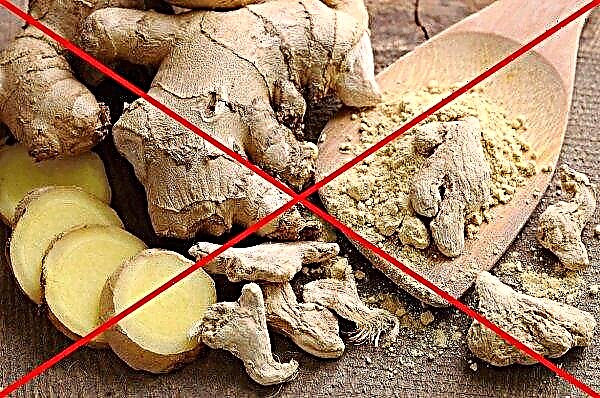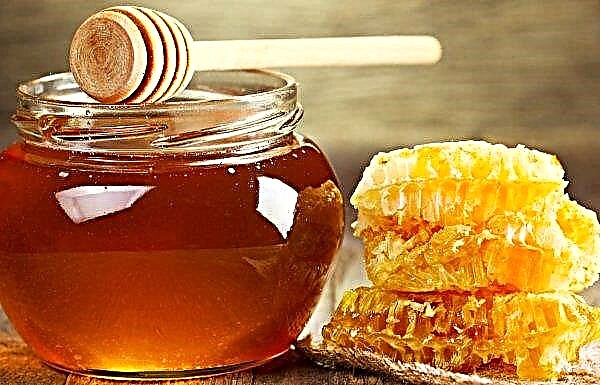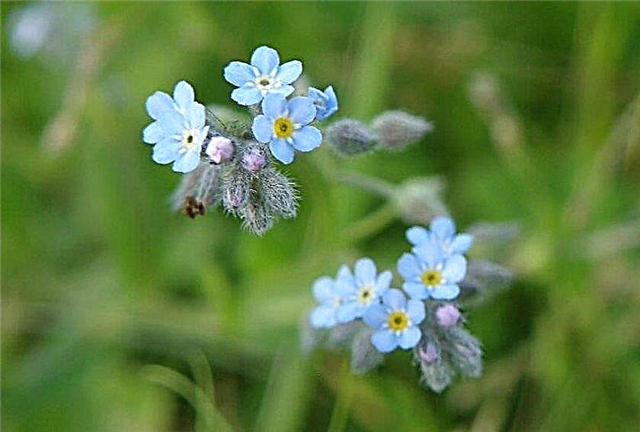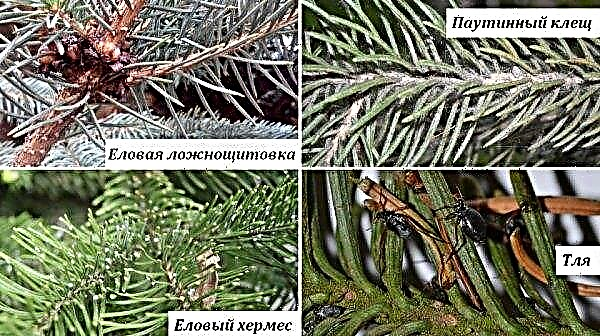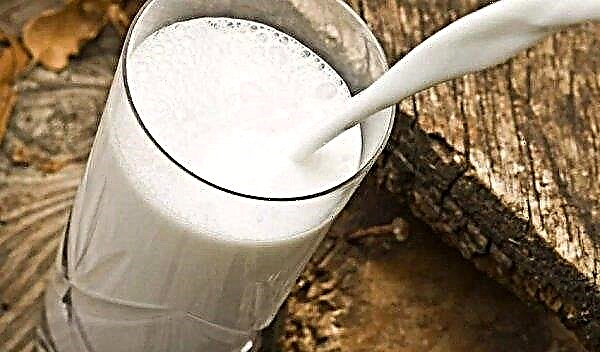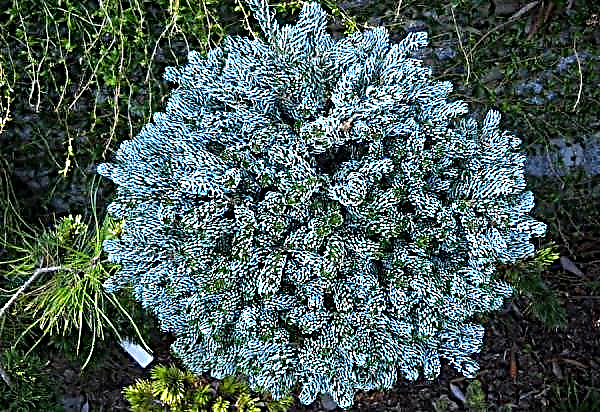Watermelon is a delicious berry of impressive size, which most gardeners grow in their garden. However, watermelons do not always grow large and sweet, so the place, planting technology, timing and features of plant care play a major role in the cultivation of watermelons at home. In order for the result of your work to be positive, you must take into account the above conditions, observing the recommendations that will be considered in the article.
Choosing the best grade
The choice of watermelon variety should be based on the region of cultivation, taste, yield and expected size of the fruit. These characteristics are considered subjectively, that is, some gardeners expect to get many small fruits of early ripening, and others - a small number of huge watermelons that ripen closer to autumn.
Did you know? The watermelon-record holder is a fruit that was grown in the United States, its weight was 120 kg, and the record is recorded in the Guinness Book of Records.
There are a lot of varieties of watermelon, so we will consider the best representatives of the berry with qualitative characteristics, based on which, we can make the right choice:
- Astrakhan - refers to mid-ripening varieties, from 1 ha you can get up to 50 tons of fruits. The average weight of fruits when grown in the southern warm regions is 5–6 kg, in the middle lane grows no more than 3 kg. Watermelons have a thick skin, so they are long and well stored. The variety normally tolerates prolonged drought, but under such conditions, voids often form inside the fruit. It can be grown with seedlings and seeds, but the second method is suitable only for the southern regions.

- Sugar baby - is an early variety, the fruits are small, weigh an average of 2-3 kg, sometimes can reach 6 kg. The uniqueness of the variety is that it grows and bears fruit well both in warm regions and in temperate climates. The peel of the berries is thin, but strong, well protects the flesh from mechanical damage, medium safety. For planting varieties, seedlings and seed methods are used, in a cool climate it can be successfully grown in greenhouses.

- Crimson Sweet - An early variety, the fruits of which, subject to all the subtleties of cultivation, reach 10 kg, more often 4-6 kg. The peel is of medium thickness, well protects the pulp from mechanical damage. The fruits are stored well, especially if a low temperature regime is observed. Taste and growth rate are highly dependent on weather conditions; a cool climate is not suitable for cultivating a variety.

- Chill - medium-late variety, oval-shaped fruits, with a weight of not more than 5 kg. The peel is of medium thickness, watermelons are normally stored under the recommended temperature conditions. The variety is well adapted to changes in weather conditions, while maintaining quality characteristics. It can be planted by seed and seedlings in temperate and warm regions.

- Twinkle - refers to early ripening varieties, the fruits are small, up to 3 kg in weight. The berries have a thin peel, so they do not tolerate transportation, the slightest mechanical damage leads to an instant onset of rotting of the fetus. Despite the significant lack of a thin peel, the whole fruits are well and long stored, have an excellent taste, so the variety does not lose its popularity among gardeners. Overripe fruits are prone to cracking, so you cannot delay harvesting. It is possible to grow a variety in warm and temperate climates by seedling and seed methods.

How to plant and grow watermelon in the open ground
The process of growing watermelon in the open field is not very different from the generally accepted rules for the cultivation of gourds. To get a good harvest of high-quality berries, consider the features of seed, soil preparation and the optimal planting scheme.
Preparing planting material
The basis for a high-quality and abundant crop is correctly selected, according to climatic conditions, seeds that are pre-prepared before planting in open ground.
After purchasing the seed material, it is necessary to reject low-quality units, discard hollow, damaged, diseased seeds. An additional step in checking the seeds for quality is immersing them in a saline solution (for 0.5 l of water 2 tbsp. L. Salt) for 30 minutes. After such soaking, poor-quality seed material will float to the surface, and suitable for planting will settle to the bottom.
Next, the seeds are disinfected with a weak pink solution of potassium permanganate (add potassium permanganate on the tip of a knife to 1 liter of cold boiled water). It is recommended to withstand seeds during the day. After processing the seeds, they are well dried on a newspaper or any other paper, leaving on a sunny windowsill for 2 days.Did you know? There is a square watermelon that was bred in Japan in 1981 by a farmer from Zanzuji. Such specimens solve the problem of transporting fruits.
Soil preparation
When the soil is sufficiently warmed up by the spring rays of the sun, it is necessary to carry out harrowing, which will save a sufficient amount of moisture in the soil. Further measures to prepare the soil for sowing should be aimed at preventing the settlement of the territory with weeds and the introduction of fertilizers. The best option for anti-weed treatment is the use of continuous herbicides. Regardless of which drug is chosen, it is used 15 days before sowing seeds into the soil.
Fertilize begin in the fall. The first feeding is carried out 2 weeks after the complete harvesting of the precursor plants from the garden. Useful top dressing for watermelons are superphosphates (20 g per 1 m²) and potassium sulfate (10 g per 1 m²). Mineral fertilizers are made under digging. It will be useful to introduce organic matter - manure or compost, in the amount of 1 bucket per 1 m² for digging. In the spring, nitrogen fertilizers are applied (4 g per 1 m²), which are scattered on the soil surface immediately before sowing seeds. Plantings are abundantly watered, thus, fertilizing dissolves and penetrates the soil.
Seeding scheme
Most often, watermelon seeds are sown in holes of 2-3 pieces, but this method of planting is ineffective, because plants due to lack of free space have lower yields, and the fruits grow small. It is better to sow the seeds in the grooves, keeping the row spacing of 2 m, each seed is placed at a distance of 30 cm, but in the future planting is thinned out, leaving a distance of 1 m between the mature plants. The seeds should be planted to a depth of 3-5 cm. For the normal existence of plants and high yields in an area of 100 m² should grow no more than 50 bushes.
To determine when to sow watermelon seeds in the soil, you need to carefully study the information on the package and monitor the weather conditions. Usually, sowing is practiced in late May or early June, when the soil warms up well and there is no risk of plant freezing.

Aftercare
High-quality regular care of plants is a must if you plan to get a plentiful harvest.
Watering
Watering watermelons too often is not necessary, excess water and its stagnation can provoke rotting of the root system and fruits. It will be enough to water the plants once a week, using 30 liters of water per 1 m², provided that there is no regular natural rainfall. In hot, dry periods, watering can be increased by adding 30 liters of water per 1 m² twice a week. Watering is recommended not only the area around the bush, but also the aisles. When the fruits begin to form, watering is gradually reduced, completely stopping the introduction of water into the soil 3 weeks before harvesting.
For irrigation, the collected rain, well, spring, or tap water of good quality is suitable. Before watering, it is recommended to collect water in barrels, then leave them in the sun to warm the contents.Important! Excess moisture in the soil spoils the taste of watermelon and significantly reduces the shelf life of the harvested crop.
Top dressing
After 2 weeks after sowing, the plantings are fertilized; as a top dressing of watermelons, a solution of ammonium nitrate (per 10 l of water 20 g of fertilizer) is used, pouring 2 l of nutrient mixture under each bush. Subsequent top dressing is introduced during the formation of buds on the bushes, at this time a mixture of mineral fertilizers is used (calcium chloride - 4 g, ammonium nitrate - 4 g, superphosphate - 6 g), which is applied under the bush and then pour 1 liter of water.
Bushes
For the best ripening of fruits, preservation of the large size of watermelons, as well as to avoid thickening of the planting, it is necessary to carry out the procedure of forming a bush.
There are several common ways to form a watermelon bush:
- Removal of all shoots except the central one and all shoots of the first order. In order for the crop to form, and most importantly, to mature, all side shoots, except the above, must be removed by pinching at the beginning of their growth. You can pinch the shoots with your fingers or cut off with a secateurs, leaving a small “stump” that will prevent repeated growth.
- Preservation on the bush of the central whip and two side, with the removal of all the others. For the procedure, you need to wait until several side lashes appear on the bush and make sure that the rest are removed in a timely manner. It is recommended to leave one strong ovary on each lash, and break off the rest, following the principle: one lash - one ovary.
Pest and Disease Control
Like all other gourds, watermelon can be affected by diseases and pests, so in order to protect the plant and preserve the crop, it is necessary to understand the possible problems.
Among the common diseases of watermelon are:
- Powdery mildew - when it appears, the leaves become covered with white coating, the affected leaf plates die off, the fruits are deformed and rot. You can cure the disease by treating the bush with the preparations "Karatana", "Topaz", "Planriz", according to the instructions.

- Peronosporosis - occurs under the influence of a fungus, it affects large formed leaves, the front side of which is covered with yellow spots, and the reverse side is gray-violet, the fruits are deformed and stop growing. It is necessary to treat the disease with the “Strobi”, “Quadrice” preparations, following the instructions.

- Olive spotting - on the surface of the leaves and shoots dark spots of irregular shape are formed, the petioles are covered with ulcers, the ovaries dry out and crumble. The disease can be cured with Oxychom, Abiga-Peak preparations, which are sprayed with plants according to the instructions on the package.

- Gray rot - destroys the leaves, shoots and ovaries on the plant, which are covered with gray coating, with increased humidity, the process of decay begins, the plant dies. You can stop the development of the disease with the Teldor, Topaz, Sumileks drugs, using them according to the instructions.

- Cucumber Mosaic - the disease is provoked by a virus, dots of a light green color form on the leaves of the plant, the bush slows down in growth. The disease is incurable, therefore, in case of damage, it is better to remove the plant from the garden so that healthy specimens do not become infected. At the initial stage, the development of the disease can be stopped by “Karbofos”, which is sprayed with bushes according to the instructions for the drug.

Pests that can affect watermelon bushes are:
- Melon aphids - small insects of light green color, which settles on the back of the leaves, the affected parts of the plant dry out and fall off. You can deal with the pest "Commander", "Mospilan", spraying the bushes according to the instructions.

- Wireworm - the larva of a nutcracker beetle, which settles in the fruits of a watermelon and gnaws through holes in it, which leads to rotting of the crop. The problem can be solved by treating the plants with "Provotox", "Earth".

- Spider mite - a very small insect that settles on leaves and shoots, they are soon covered with a thin web. The tick feeds on the sap of plants; over time, the bush dries out. To combat the pest, Neoron and Aktofit drugs are used, according to the instructions on the package for the drug.

Observing the general measures for the prevention of diseases and pests, you can significantly reduce the risk of damage:
- Promptly remove plant debris from the territory.
- For planting watermelons, choose a well-ventilated area where air does not stagnate.
- Follow the recommended planting pattern so that the soil under the plants has time to dry out.
- Do not forget to loosen the soil for better aeration of the roots and prevent the development of bacteria and fungi.
- Promptly carry out preventive treatments with broad-spectrum fungicidal and insecticidal preparations that will protect plants from most diseases and pests.
Harvesting and storage
Collect watermelons and harvest for storage is necessary at the moment when they have reached the first stage of maturity. This stage usually occurs 5 days before the full maturity of the fruit. If you collect watermelons earlier, their taste will be worse, and if you wait a while with the harvest, the shelf life will be much less.
You can determine the harvest period according to the information contained on the package with seeds. The degree of the first technical maturity is evaluated after cutting the fetus, paying attention to the condition of the pulp and seeds. If the fruits are picked on time, their flesh will have a pink tint, which during storage will change to red.Important! For long-term storage only watermelons of late varieties are suitable, this should be considered when buying seeds.
Fruits of early varieties are harvested as they ripen and used for food immediately, late watermelons are harvested immediately before frost. To harvest, use secateurs, cut pedicels, leaving a small process on a watermelon (about 5 cm).
It is better to prepare for storage watermelons of small size, with a thick peel, without mechanical damage. The best place to store the crop for the winter is considered to be a room with good ventilation and a temperature in the range + 1 ... + 4 ° С. Best of all, fruits will be stored in wooden crates or on shelves wrapped in straw or sawdust.

Useful growing tips
Consider some useful tips for growing watermelons at home, which will help to get a large and high-quality crop:
- Pay attention to the recommended watermelon growing areas indicated on the package in order to get a delicious harvest.
- In one place, watermelons can grow no more than 2 years, then the territory should be changed, because they deplete the soil and in the third year the crop will be very scarce.
- A good means of enriching the soil with useful substances is the sowing of green manure plants a year before the planned sowing of watermelons in the same place.
- If frosts are predicted after sowing watermelons in order to prevent crops from freezing, they are covered with dense polyethylene, and the shelter height should be about 70 cm.
- To enhance the growth of stems, each plant is spudded, which stimulates the growth of additional roots and makes the plant more powerful and strong.
- For uniform ripening of watermelons, they are recommended to turn over several times during the summer, directing different parts of the fruit to the sun.
Thus, the process of growing watermelons at home is simple, if you know the basic rules for preparing seeds and soil for planting, and also follow the recommendations for further care of the plant.














